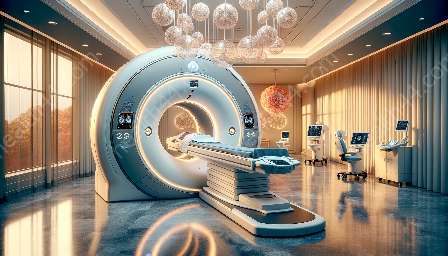Surgical navigation systems have revolutionized the way surgeries are performed by providing real-time, 3D guidance to surgeons during procedures. These systems have become an integral part of modern healthcare, seamlessly integrating with medical imaging devices and medical equipment to enhance precision and accuracy. In this comprehensive guide, we will delve into the workings of surgical navigation systems, their compatibility with medical imaging devices, and their role in the broader landscape of medical devices and equipment.
Understanding Surgical Navigation Systems
Surgical navigation systems, also known as computer-assisted surgical systems, utilize advanced technology to provide surgeons with real-time, 3D visualization and guidance during surgical procedures. These systems rely on a combination of tracking devices, imaging techniques, and specialized software to create a digital map of the patient's anatomy, enabling surgeons to navigate with unparalleled precision.
Key Components of Surgical Navigation Systems
A typical surgical navigation system consists of several key components:
- Tracking Devices: These devices are attached to surgical instruments and provide real-time positional data to the navigation system. Common tracking technologies include optical, electromagnetic, and hybrid systems.
- Imaging Techniques: Medical imaging devices such as CT scans, MRI scans, and intraoperative fluoroscopy provide high-resolution images that form the basis for the digital anatomical map used by the navigation system.
- Specialized Software: The software processes and fuses the imaging data with real-time positional information from the tracking devices, allowing the system to generate 3D visualizations and provide guidance to the surgeon.
Integration with Medical Imaging Devices
Surgical navigation systems are intrinsically linked to medical imaging devices, as the high-quality imaging data produced by these devices forms the foundation for the accurate digital mapping and visualization performed by the navigation system. CT and MRI scans, in particular, are essential for creating detailed 3D anatomical models that enable precise navigation and informed decision-making during surgeries. Furthermore, intraoperative imaging technologies such as fluoroscopy can be seamlessly integrated with surgical navigation systems to provide real-time updates and verification during the procedure.
Enhancing Precision in Surgical Procedures
The synergy between surgical navigation systems and medical imaging devices elevates the precision and accuracy of surgical procedures to unprecedented levels. By providing real-time guidance based on detailed anatomical information, surgeons can navigate complex anatomical structures with enhanced confidence, leading to reduced chances of errors and complications. This intersection of technology not only benefits surgeons but also translates to improved patient outcomes, shorter recovery times, and minimized risks.
Compatibility with Medical Devices and Equipment
Beyond their integration with medical imaging devices, surgical navigation systems also complement a wide range of medical devices and equipment used in modern healthcare settings. From surgical robots and minimally invasive instruments to intraoperative monitoring devices, the seamless compatibility of surgical navigation systems with other medical technologies is reshaping the landscape of surgical interventions.
Advancing Minimally Invasive Surgeries
Minimally invasive surgical techniques, such as laparoscopy and robotic-assisted surgery, have gained prominence due to their benefits of reduced trauma, faster recovery, and improved cosmetic outcomes. Surgical navigation systems play a crucial role in enhancing the precision of these procedures by providing real-time guidance to surgeons, especially in scenarios where direct visualization is limited. This compatibility with minimally invasive instruments is driving the evolution of surgical navigation systems and expanding their applications across various specialties.
Real-time Integration with Intraoperative Devices
In addition to their role in guiding surgical instruments, navigation systems seamlessly integrate with intraoperative monitoring devices, anesthesia equipment, and other vital systems within the surgical environment. This real-time integration enables the system to continuously update and adapt to the dynamic nature of surgeries, ensuring that the guidance provided to the surgeon remains accurate and responsive throughout the procedure.
Impact on Postoperative Care and Follow-up
The compatibility of surgical navigation systems with medical devices extends beyond the operating room, influencing postoperative care and follow-up processes. Data captured during surgeries, such as instrument trajectories and anatomical landmarks, can be utilized for postoperative analysis and documentation. Furthermore, the integration of navigation data with electronic medical records facilitates comprehensive and accurate patient information management, contributing to improved continuity of care and outcomes.
Future Applications and Innovations
The convergence of surgical navigation systems with medical imaging devices and equipment is paving the way for future applications and innovations in healthcare. Advanced developments in augmented reality (AR) and virtual reality (VR) are poised to further enhance the capabilities of navigation systems, offering surgeons immersive, interactive visualizations of patient anatomy and procedural guidance. Furthermore, the integration of artificial intelligence (AI) algorithms with navigation systems holds the potential to automate certain aspects of surgical planning and decision-making, optimizing efficiency and outcomes.
Expanding Accessibility and Global Impact
As technology continues to evolve, efforts are being made to broaden the accessibility of surgical navigation systems and their integration with medical imaging devices and equipment. This includes adapting the technology to accommodate diverse healthcare settings, ranging from advanced hospital facilities to remote and resource-limited environments. By extending the reach of these integrated solutions, the impact of surgical navigation systems in improving surgical outcomes and reducing disparities in healthcare is poised to expand globally.
Continual Evolution and Collaboration in Healthcare
The dynamic intersection of surgical navigation systems with medical imaging devices and equipment reflects a broader trend of continual evolution and collaboration in healthcare technology. As stakeholders across the healthcare ecosystem, including clinicians, engineers, and manufacturers, collaborate to further refine and integrate these technologies, the potential for enhancing patient care and advancing surgical practices becomes increasingly achievable.
Conclusion
Surgical navigation systems represent a pinnacle of advanced technology in modern healthcare, offering surgeons unprecedented precision and guidance in surgical interventions. Their seamless compatibility with medical imaging devices and equipment underscores their integral role in shaping the future of surgical practices. Understanding the intricate interplay between surgical navigation systems, medical imaging devices, and other medical technologies is essential for leveraging the full potential of these integrated solutions and fostering advancements in patient care and surgical outcomes.


